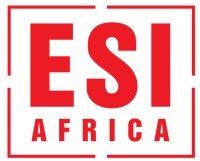How to build an integrated e-mobility market in Africa
Unlocking Africa’s EV potential request a mindshift – from thinking nationally to considering regional need.
For Africa, e-mobility is no longer an aspiration but an urgent necessity to achieve climate commitments, improve air quality, reduce fuel-price exposure and catalyse new industries in assembly, charging, software and batteries.
Africa’s transport ecosystem is at a pivotal moment as rapid urbanisation increases the demand for passenger and freight mobility, as cross-border trade and corridor traffic grows.
Across the continent, efforts to boost EV adoption are quietly underway:
- e-bus pilots in Lagos, Nigeria and Nairobi, Kenya
- an electric bus rapid transit programme in Dakar, Senegal,
- an internal combustion engine (ICE) vehicle ban in Ethiopia,
- growth of domestic EV original equipment manufacturers (OEMs) in East Africa (Roam, Ampersand, Zembo, and many others) and West Africa (Max, Spiro, and others in Benin, Togo and Nigeria), and
- the policy announcement of South Africa’s Electric Vehicles White Paper.
But despite these promising pilots, Africa’s EV landscape is fragmented. “The barrier is not technology, but policy fragmentation that forces every investor to relearn the rules, tariffs, approvals, plugs and payments at every border.”
Integrating e-mobility efforts across Africa
Unlocking Africa’s EV potential request a mindshift – from thinking about only what a nation needs, to regional integration that considers what would help the whole continent.
A new report developed by RMI and the United Nations Environmental Programme (UNEP), suggests five pillars of policy harmonisation which could transform national efforts into a unified African market.
World Bank research suggests that Africa’s regional economic communities play a powerful role in aligning national and regional policy priorities, coordinating infrastructure development and facilitating trade. The African Continental Free Trade Area (AfCFTA) provides the continental backbone and Regional Economic Communities (RECs) such as the East African Community (EAC), the Economic Community of West African States (ECOWAS), and the Southern African Development Community (SADC) offer practical stepping stones. Together, these three blocs encompass more than half of the continent’s population and vehicle stock.
“Harmonisation at the REC level has the potential to lower costs, accelerate cross-border supply chains, and expand local value capture beyond today’s limited national markets.”
The five pillars of policy harmonisation
Region-wide ICE vehicle phaseout targets
Without clear timelines to phase out ICE vehicle sales and registrations, the market for EVs will remain fragmented and slow to grow. Coordinated REC-level ICE vehicle phaseout targets can provide clarity and scale for both investors and manufacturers.
Standards and interoperability
One of the biggest barriers to scaling EVs across Africa is the absence of common technical standards. Adopting a single, widely used interface for both alternating current and direct current charging would allow any vehicle to access any public station across borders. Standards should also cover battery swapping, with a clear safety framework for station design, equipment certification, installer competence and inspection.
Customs and corridor transit
Import duties and customs clearance rules for EVs, batteries, and components vary widely across Africa. This raises prices, delays supply chains and discourages regional assembly, since parts face multiple tariffs as they cross borders. Harmonisation can be achieved by issuing common tariff schedules with clear categorisation.
Demand aggregation and public procurement
Across Africa, governments and cities procure EV fleets in small, uncoordinated batches, often using different technical requirements and tender processes. This leads to higher unit prices, limited supplier interest, and a lack of clear demand signals for manufacturers. Domestic assembly and investment opportunities are also slowed because procurement pipelines remain uncertain and dispersed.
By harmonising procurement specifications and aggregating demand across cities and countries, Africa can shift from fragmented tenders to a coordinated market.
Battery circularity and second use
Today, most countries lack frameworks for collection, reuse or recycling, limiting opportunities for regional recycling hubs and second-life applications that could reduce costs and strengthen energy security.
The way forward requires coordinated regional solutions, for example through
- standardising modular cell and pack formats,
- introducing regionally consistent extended producer responsibility (EPR) rules, and/or
- ensuring cross-border transport provisions and recycler authorisation criteria align with the Basel Convention to prevent illegal dumping while enabling regional recycling supply chains.
RECs can play a central role by facilitating regional recycling plants organised on a hub-and-spoke model, where member states channel collected batteries to shared facilities.
Cover photo: A fleet of EVs outside the E-mobility Conference and Expo held in Nairobi early 2025. Source: Kenya Power/X


